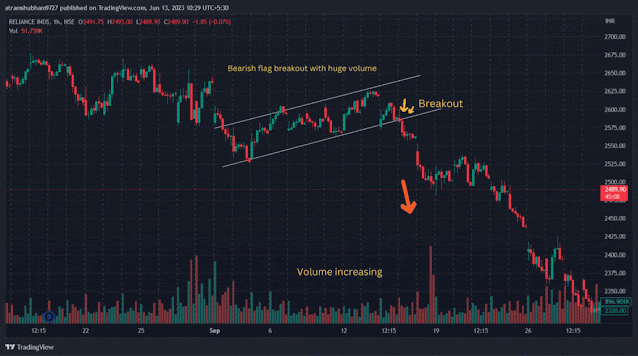Volume Analysis
Volume
Volume is defined as the number of shares, or contracts traded, whether for a stock or an index. Volume can be seen on an hourly time frame, a day, a week, a month, etc.
The analysis of volume is a basic and very important element of technical analysis. The intensity and strength of a given price move can be judged by studying volume. The greater the volume the more active that stock is.
As in the figure below of Reliance stock, the volume bars are usually plotted at the bottom of any chart represent the volume of trading.
The Importance of VolumeVolume and Trends combination
In technical analysis volume is used for both confirming trends and also for confirming chart patterns.Volume is an important indicator for analyzing the strength of a move. For example, if an up or down move is accompanied by high volume, the move can be said as a strong move.
As we have seen in the previous chart patterns blog's, during the consolidation period the volume is usually null or very low. If volume is high on breakout day relative to the average daily volume, it is a sign that breakout move is going to sustain and vice versa.
So basically if the prices are moving upward or downward trend, volume should also be increase. And if the prices and volume does not match it is usually a sign of weakness.
In the following figure of Reliance we can clearly see that after the breakout of downtrend there is a huge spike of buying volume emerges.
Volume and Chart Patterns combination
Volume is also used as a chart pattern confirmation. We have seen a different types of chart patterns such as head and shoulder, flags, triangles, pennants, double tops and bottoms are confirmed with the help of volumes.
As a good chartist, you should be able to use and analyze volumes whenever you see a clear pattern on chart.

Symmetrical triangle BO with volume
That's it for this blog.
See you in the next one.
Keep learning.






Comments
Post a Comment